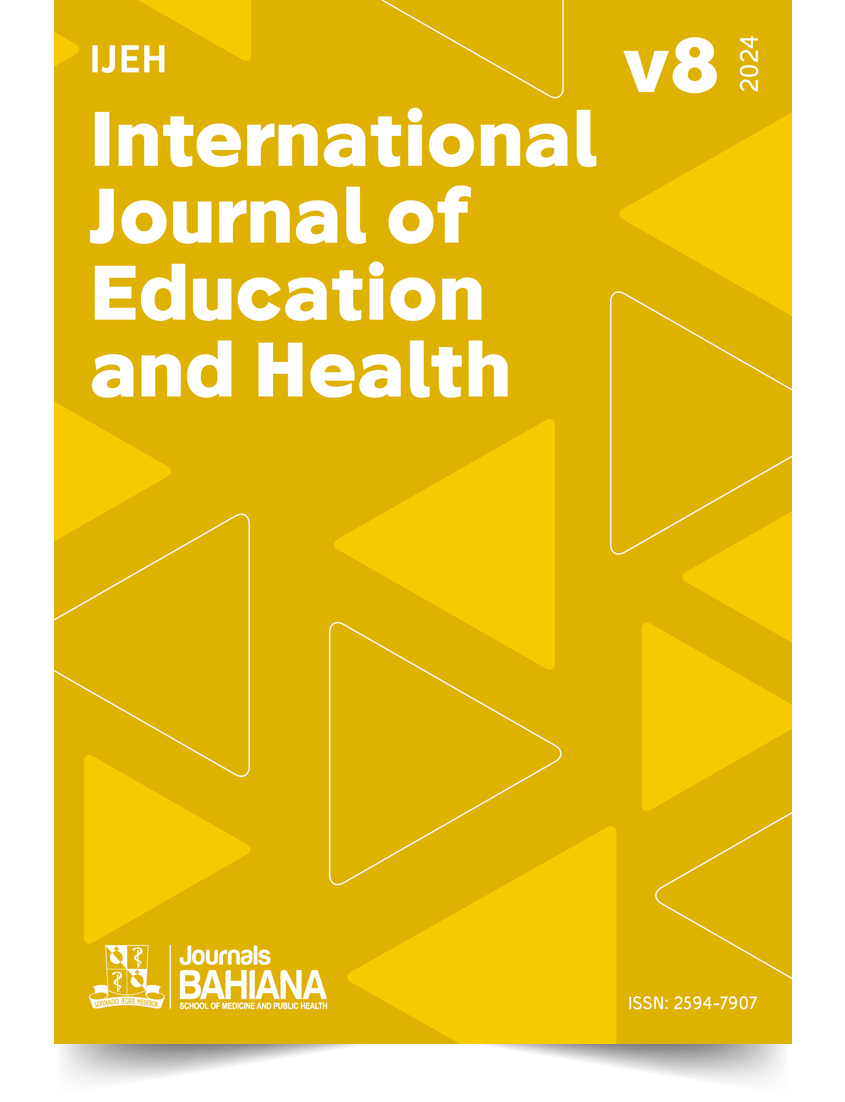Learning based on virtual cases as support for a curricular module in the medical course
DOI:
https://doi.org/10.17267/2594-7907ijeh.2024.e5410Keywords:
Medical Education, Virtual Simulation , Teaching technologies, 360 Patient PlatformAbstract
CONTEXT: This is an experience report on learning based on virtual cases as support for the curricular module of the Medicine course at a private educational institution in Salvador-Bahia-Brazil. By recognizing that students must carry out simulations/experiments, the possibility emerges of putting clinical case studies into practice with virtual support, as a strategy to promote the training of future doctors. INTERVENTION: In this report, the teaching-learning strategy from the year 2007 is addressed in a curricular component of the 6th semester, whose main educational objective is the development of clinical reasoning. RESULTS: This report is built on the experience of the teacher-observer-participant, who worked from planning and initial implementation to the current reformulation, with the introduction of technological innovations. The “Integrated Clinic II” curricular component, applied in the 6th semester of the medical degree, gained, in 2007, the virtual case resource to support the development of clinical reasoning and guarantee the prior study of clinical cases before the face-to-face moment. In 2021, to incorporate and maintain, beyond the pandemic, technological innovations carried out over time, the Patient 360 virtual simulator resource was introduced. CONCLUSION: The scenario of technological innovation does not conflict with the principles and objectives of education and practices in health services, being important adjuvants for teachers today, which is demonstrated in this report.
Downloads
References
(1) Flato UAP, Guimarães HP. Simulation-based education in urgency and emergency medicine: art imitates life. Rev Bras Clin Med [Internet]. 2011;9(5):360-4. Available from: https://pesquisa.bvsalud.org/portal/resource/pt/lil-601356
(2) Resolução CNE/CES nº 3, de 20 de junho de 2014. Institui Diretrizes Curriculares Nacionais do Curso de Graduação em Medicina e dá outras providências. [Internet]. Diário Oficial da União. 2014 jun. 23. Available from: https://normativasconselhos.mec.gov.br/normativa/view/CNE_RES_CNECESN32014.pdf?query=classificacao
(3) Yamane MT, Machado VK, Osternack KT, Mello RG. Realistic simulation as a teaching tool in health: an integrative review. Espac Saude. 2019;20(1):87-107. https://doi.org/10.22421/15177130-2019v20n1p87
(4) Troncon LEA. Utilization of simulated patients for clinical skills teaching and assessment. Medicina. 2007;40(2):180-91. https://doi.org/10.11606/issn.2176-7262.v40i2p180-191
(5) Canesin MF, Furtado FN, Gonçalves RM, Carraro DC, Oliveira TMN, Rodrigues R, et al. Learning: New Strategy for Humanized Digital Medical Education and Training in Cardiology. Arq Bras Cardiol. 2022;119(5 suppl 1):35-42. https://doi.org/10.36660/abc.20220423
(6) Gusmão MM, Menezes MS, Lima ML, Aleluia IBA, Batista AV, Gusmão RN. Avaliação por estudante e docentes do ambiente virtual de aprendizagem como ferramenta de apoio à disciplina clínica na graduação. Rev Bras Educ Med. 2008; suppl 2:823-824.
(7) Menezes MS, Gusmão MM, Lima ML, Aleluia IA, Batista AV, Gusmão R, et al. An electronic tool for hybrid case-based learning applied to undergraduate students. Educ Med. 2009;12(2):S279
Downloads
Published
Issue
Section
License
Copyright (c) 2024 Nádia Caldas, Ieda Maria Barbosa Aleluia, Marta Menezes, Mary Gomes Silva, Gilmara Ribeiro Santos, Carolina Villa Nova Aguiar

This work is licensed under a Creative Commons Attribution 4.0 International License.
This work is licensed under a Creative Commons Attribution 4.0 International License.



